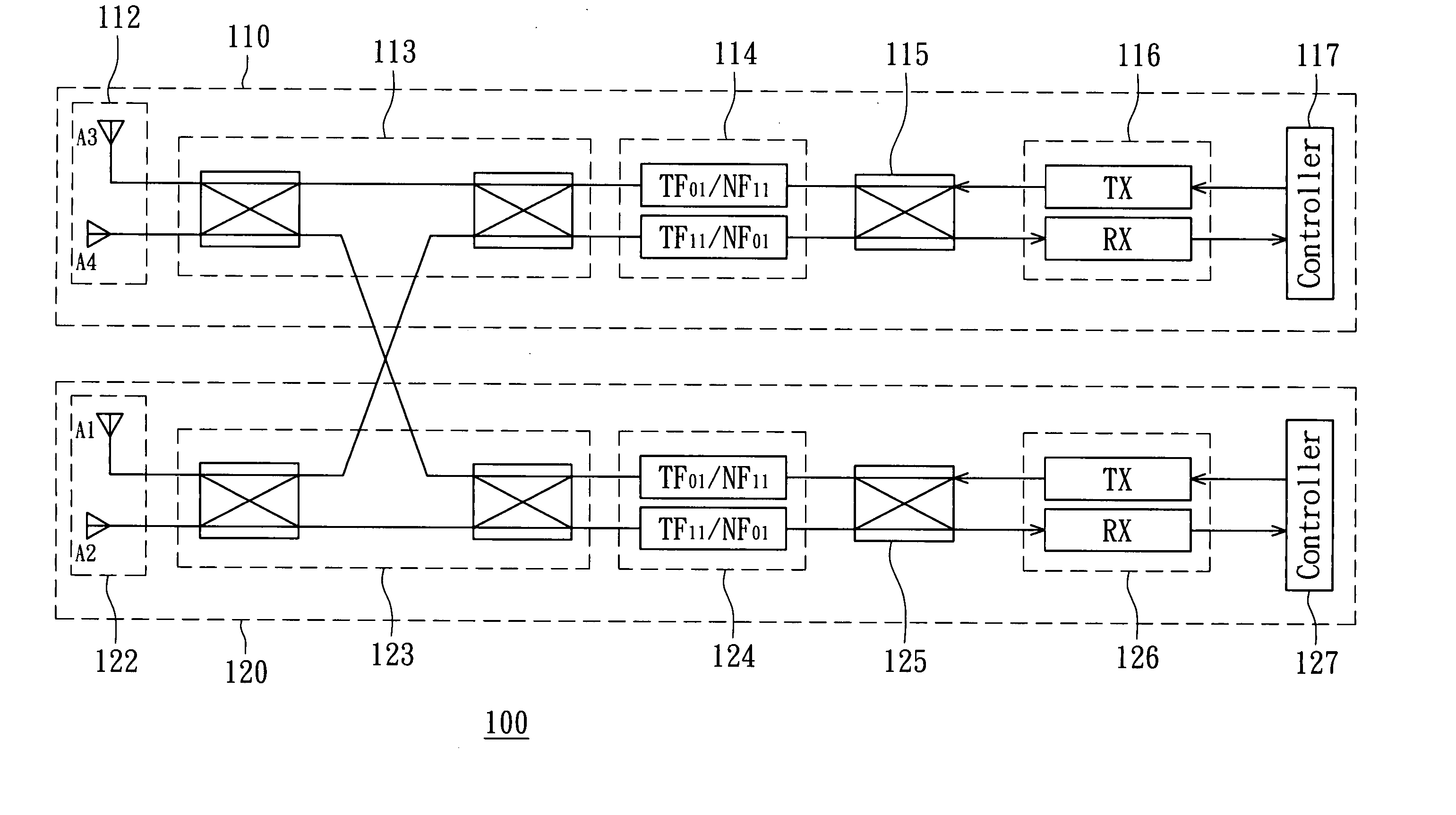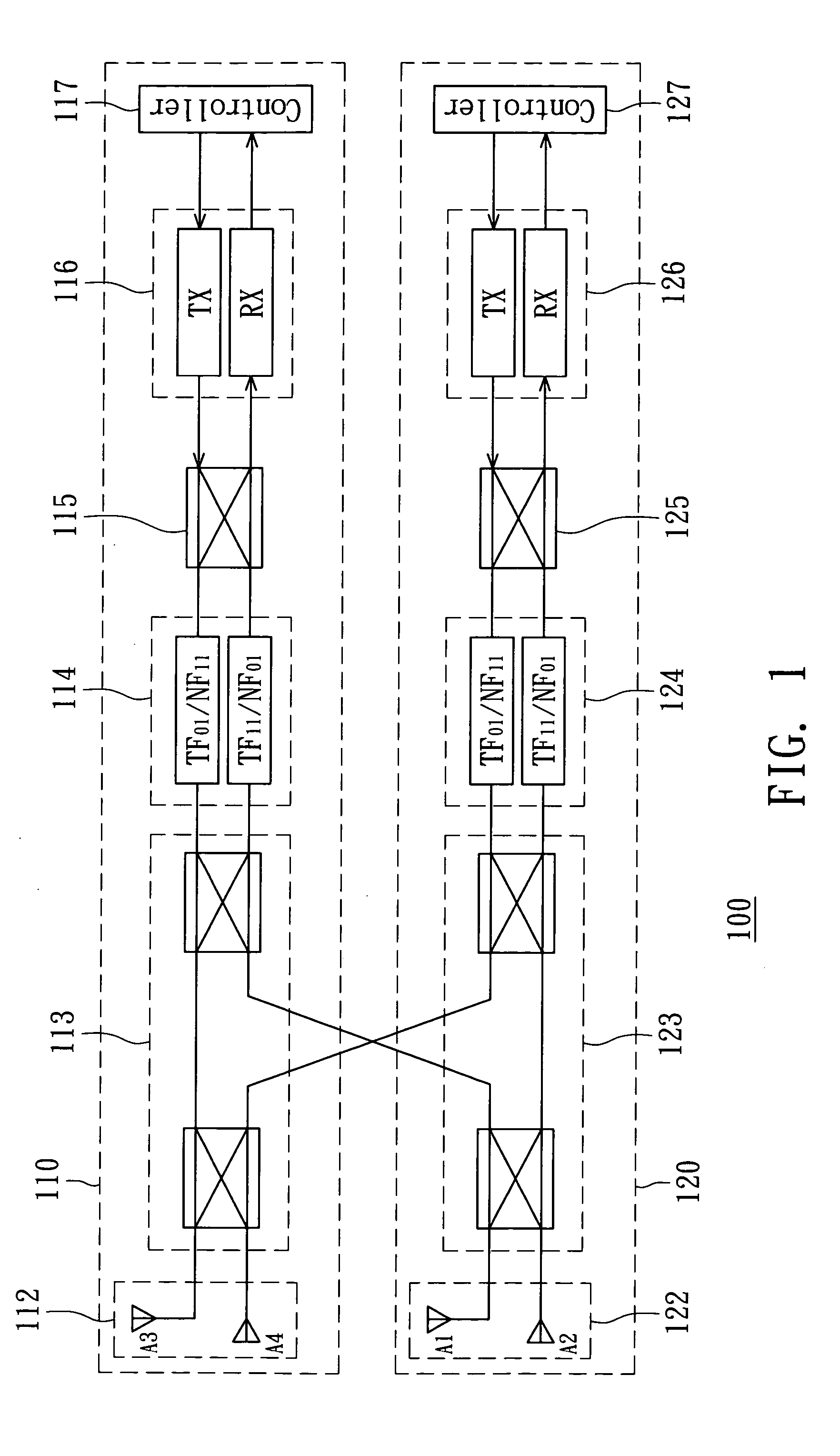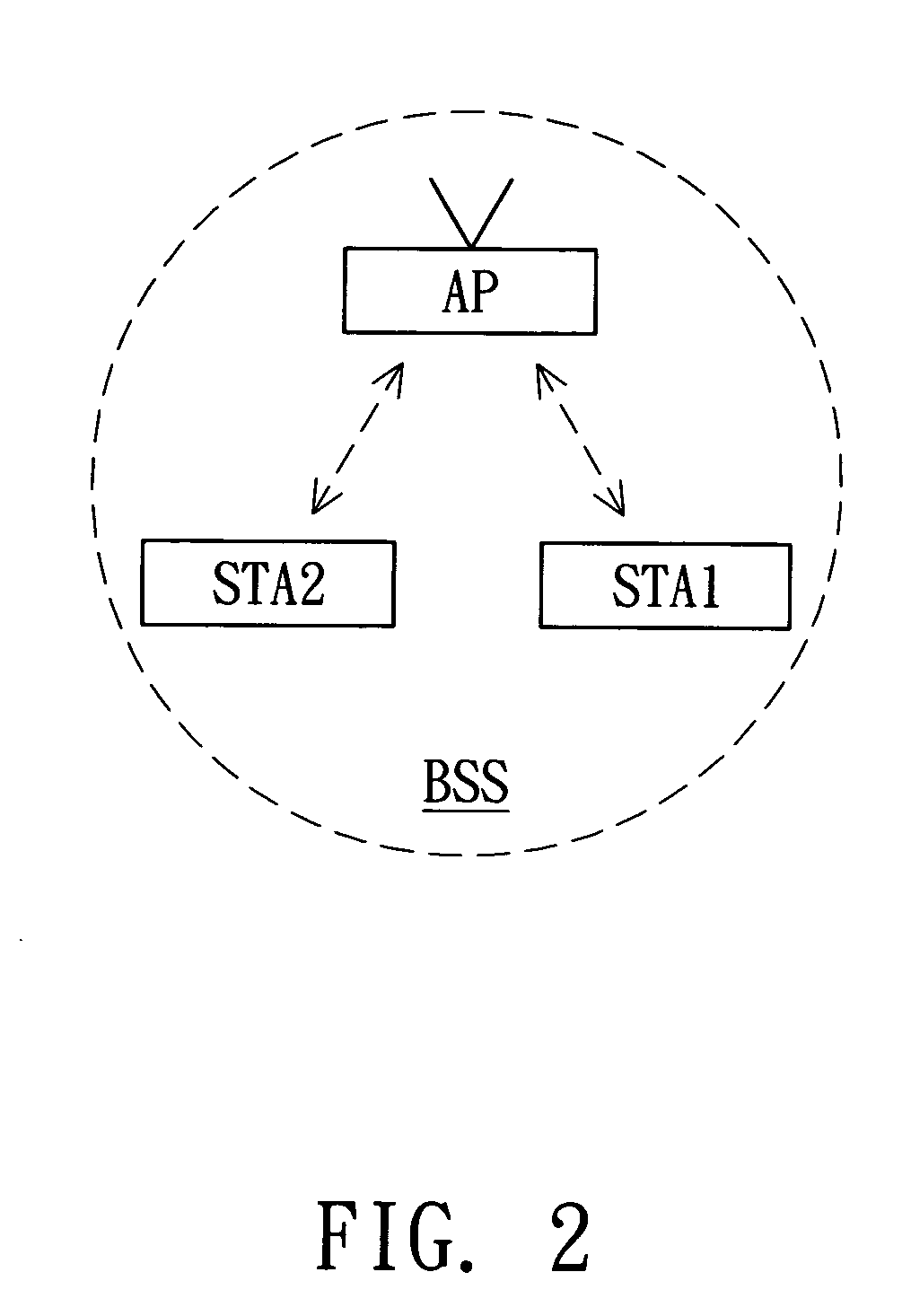Wireless device and method for radio control
a wireless communication and radio control technology, applied in the field of wireless communication devices and radio control methods, can solve the problems of frequency mixing, interference of one radio to another, interference of in-band or out-band frequencies, etc., and achieve the effect of reducing channel interference and reducing interferen
- Summary
- Abstract
- Description
- Claims
- Application Information
AI Technical Summary
Benefits of technology
Problems solved by technology
Method used
Image
Examples
Embodiment Construction
[0019] The disclosed embodiments provide an approach of cognitive radio techniques to detect network conditions and adapt to them, thereby reducing interference with other co-located radios.
[0020]FIG. 1 shows a block diagram of a wireless device according to an embodiment of the invention. The wireless device 100 includes a cognitive radio 110 and a free radio 120. The free radio 120 includes an antenna assembly 122, a first switch network 123, a filter element 124, a second switch network 125, a radio circuit 126, and a controller 127. The wireless device 100 is connected to a network (not shown). The antenna assembly 122is for receiving signals from the wireless area that are to be sent to the radio circuit 126, or transmitting signals received from the radio circuit 126 to the wireless area. The controller 127 processes data to and from the network. In some embodiments, the controller 127 includes a baseband processor (BBP) and a media access control (MAC) (not shown). The radio...
PUM
 Login to View More
Login to View More Abstract
Description
Claims
Application Information
 Login to View More
Login to View More - R&D
- Intellectual Property
- Life Sciences
- Materials
- Tech Scout
- Unparalleled Data Quality
- Higher Quality Content
- 60% Fewer Hallucinations
Browse by: Latest US Patents, China's latest patents, Technical Efficacy Thesaurus, Application Domain, Technology Topic, Popular Technical Reports.
© 2025 PatSnap. All rights reserved.Legal|Privacy policy|Modern Slavery Act Transparency Statement|Sitemap|About US| Contact US: help@patsnap.com



